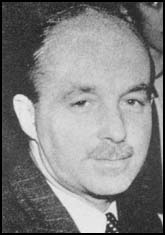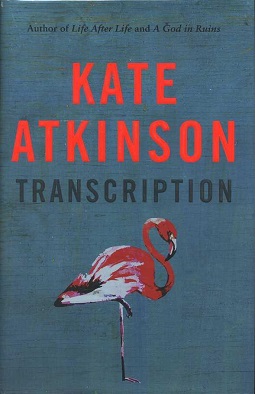The Double-Cross System or XX System was a World War II counter-espionage and deception operation of the British Security Service (MI5). Nazi agents in Britain – real and false – were captured, turned themselves in or simply announced themselves, and were then used by the British to broadcast mainly disinformation to their Nazi controllers. Its operations were overseen by the Twenty Committee under the chairmanship of John Cecil Masterman; the name of the committee comes from the number 20 in Roman numerals: "XX".

MI5, officially the Security Service, is the United Kingdom's domestic counter-intelligence and security agency and is part of its intelligence machinery alongside the Secret Intelligence Service (MI6), Government Communications Headquarters (GCHQ), and Defence Intelligence (DI). MI5 is directed by the Joint Intelligence Committee (JIC), and the service is bound by the Security Service Act 1989. The service is directed to protect British parliamentary democracy and economic interests and to counter terrorism and espionage within the United Kingdom. Within the civil service community, the service is colloquially known as Box, or Box 500, after its official wartime address of PO Box 500; its current address is PO Box 3255, London SW1P 1AE.
Mutt and Jeff were two Norwegian spies who worked for the United Kingdom and MI5 and were members of the Double Cross System.
Rupert William Simon Allason is a British former Conservative Party politician and author. He was the Member of Parliament (MP) for Torbay in Devon, from 1987 to 1997. He writes books and articles on the subject of espionage under the pen name Nigel West.

Sir Dick Goldsmith White, was a British intelligence officer. He was Director General (DG) of MI5 from 1953 to 1956, and Head of the Secret Intelligence Service (MI6) from 1956 to 1968.
Arthur Graham Owens, later known as Arthur Graham White, was a Welsh double agent for the Allies during the Second World War. He was working for MI5 while appearing to the Abwehr to be one of their agents. Owens was known to MI5 by the codename SNOW, which was chosen as a play on his last name.

Jan Willem Ter Braak was a Dutch espionage agent working for Germany who operated for five months in the United Kingdom. Ter Braak, whose original name was Engelbertus Fukken, is believed to have been the German agent who was at large for the longest time in Britain during the Second World War, despite his short period of activity. When he ran out of money, Ter Braak committed suicide in a public air raid shelter.
The London Cage was an MI19 prisoner-of-war facility during and after the Second World War to mainly interrogate captured Germans, including SS personnel and members of the Nazi Party. The unit, which was located within numbers 6, 7 and 8 Kensington Palace Gardens in London, was itself investigated following accusations that it often used torture to extract information. It was wound down in early 1948.

Guy Maynard Liddell, CB, CBE, MC was a British intelligence officer.
John Michael Ward Bingham, 7th Baron Clanmorris was a one time MI5 counterspy and an English novelist who published 17 thrillers, detective novels, and spy novels.

Alexander Paterson Scotland, (1882–1965) was a British Army officer and intelligence officer.
Mary Hannah (May) Brahe was an Australian composer, best known for her songs and ballads. Her most famous song by far is "Bless This House", recorded by John McCormack, Beniamino Gigli, Lesley Garrett and Bryn Terfel. According to Move.com.au: "She was the only Australian woman composer to win local an international recognition before World War II," having "290 of her 500 songs published. Of these, 248 were written under her own name, the remainder under aliases.

Nathalie "Lily" Sergueiew was a double agent who worked for MI5 during World War II under the codename "Treasure". She played a significant role in the Double-Cross System, particularly by deceiving the Germans about the location of the D-Day landings.
Gertrude Blount Hiscox was a British collaborator with Nazi Germany in World War II. In 1941, she was convicted of an offence under the Defence Regulations and sentenced to five years' penal servitude.

Eric Arthur Roberts was an MI5 agent during the Second World War under the alias Jack King. By posing as a Gestapo agent and infiltrating fascist groups in the UK, Roberts was able to prevent secret information from finding its way to Germany. Roberts continued to work for the British security services after the war, particularly in Vienna, but it was a time of great anxiety in the services because of the suspicions surrounding double agents such as the Cambridge spy ring.

Kathleen Maria Margaret Sissmore, MBE (1898–1982), was known as Jane Sissmore and then Jane Archer after her marriage in 1939. In 1929 she became the first female officer in Britain's Security Service, MI5, and was still their only woman officer at the time of her dismissal for insubordination in 1940. She had been responsible for investigations into Soviet intelligence and subversion. She then joined the Secret Intelligence Service (MI6), but when Kim Philby, later to be exposed as a double agent, became her boss he reduced her investigative work because he feared she might uncover his treachery.
Walter Arthur Charles Dicketts was a British double agent who was sent by MI5 into Nazi Germany in early 1941 to infiltrate the Abwehr and bring back information about any impending invasion of Britain.

Percy Eded Glading was an English communist and a co-founder of the Communist Party of Great Britain (CPGB). He was also a trade union activist, an author, and a spy for the Soviet Union against Britain, an activity for which he was convicted and imprisoned.

Transcription is a spy novel by British novelist Kate Atkinson, published in September 2018.
The Anti-Nazi Council was a London-based organisation of the 1930s. Initially part of the left-wing anti-fascist movement, it gained political significance when allied to Winston Churchill, though at the time its influence was largely covert. Between around 1935 and 1937 it was a vehicle for Churchill's attempts to form a cross-party alliance against appeasement of the fascist dictatorships. The group behind it used the title Focus in Defence of Freedom and Peace, and variants, and is sometimes known as the Focus Group.










